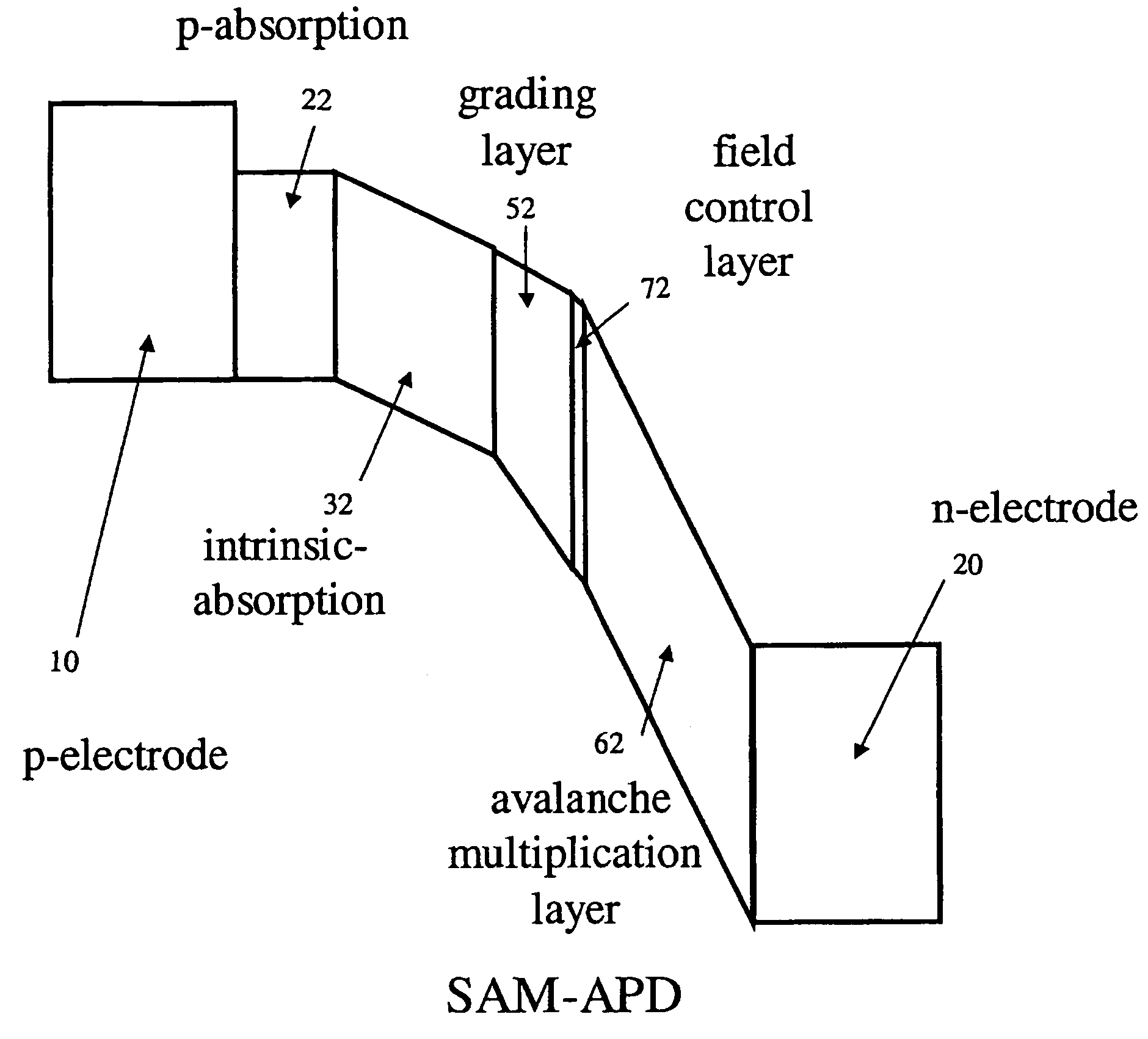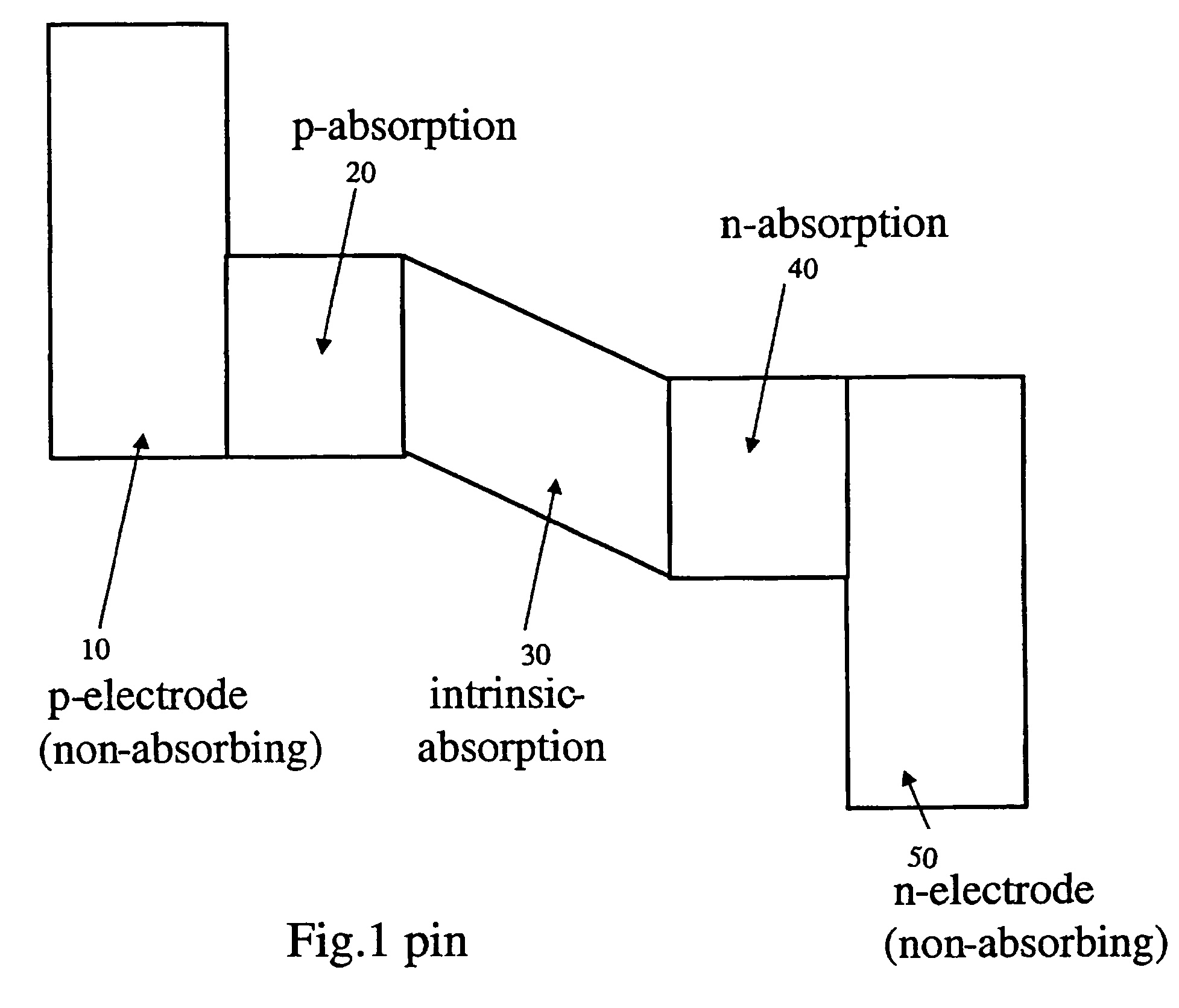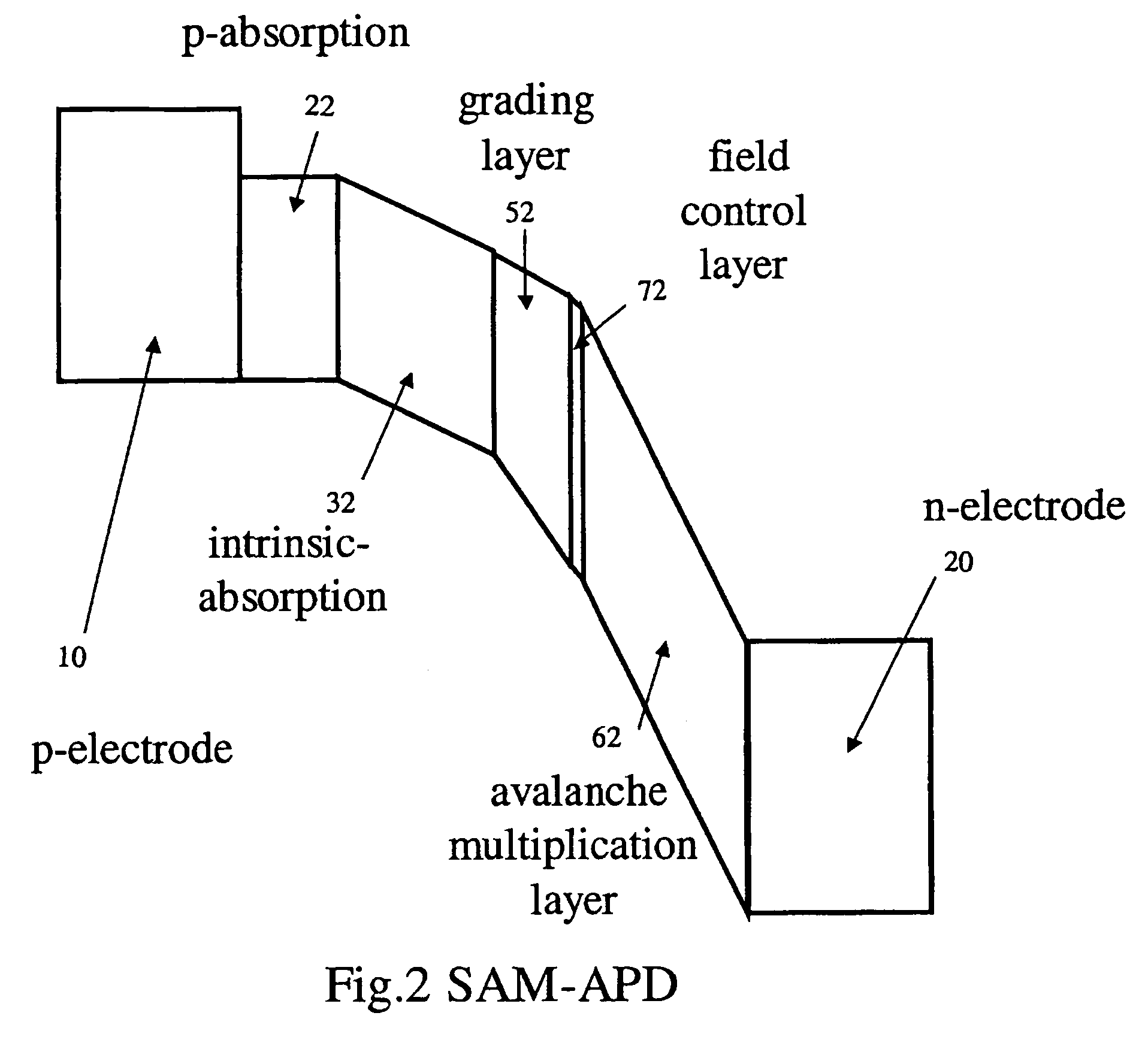Doped absorption for enhanced responsivity for high speed photodiodes
a photodiode and absorption technology, applied in the field of photodiodes, can solve the problems of reduced carrier mobility, low responsivity and hence low sensitivity, and severe compromis
- Summary
- Abstract
- Description
- Claims
- Application Information
AI Technical Summary
Benefits of technology
Problems solved by technology
Method used
Image
Examples
Embodiment Construction
[0032]Unfortunately, in a conventional pin, there is a tradeoff between speed and responsivity. To achieve high-speed, a device requires thin absorption layers so that carriers can pass through quickly before they enter the electrode. On the other hand, to achieve high responsivity, a thick absorption layer is required so that most or all photon energy is absorbed and few or none of photons are lost. This is true when the incident light is normal to the epitaxial layers. As a result, for a conventional pin, the speed X responsivity or the responsivity-bandwidth product as it is known, is essentially a constant for surface-normal light incidence. The device described by Ishibashi described heretofore, is very poor with regard to its responsivity and sensitivity but higher saturation power is attained.
[0033]In accordance with this invention, surprisingly, the speed X responsivity limit can be increased; this is of paramount importance for a high-speed avalanche photodiodes (APDs); in ...
PUM
 Login to View More
Login to View More Abstract
Description
Claims
Application Information
 Login to View More
Login to View More - R&D
- Intellectual Property
- Life Sciences
- Materials
- Tech Scout
- Unparalleled Data Quality
- Higher Quality Content
- 60% Fewer Hallucinations
Browse by: Latest US Patents, China's latest patents, Technical Efficacy Thesaurus, Application Domain, Technology Topic, Popular Technical Reports.
© 2025 PatSnap. All rights reserved.Legal|Privacy policy|Modern Slavery Act Transparency Statement|Sitemap|About US| Contact US: help@patsnap.com



